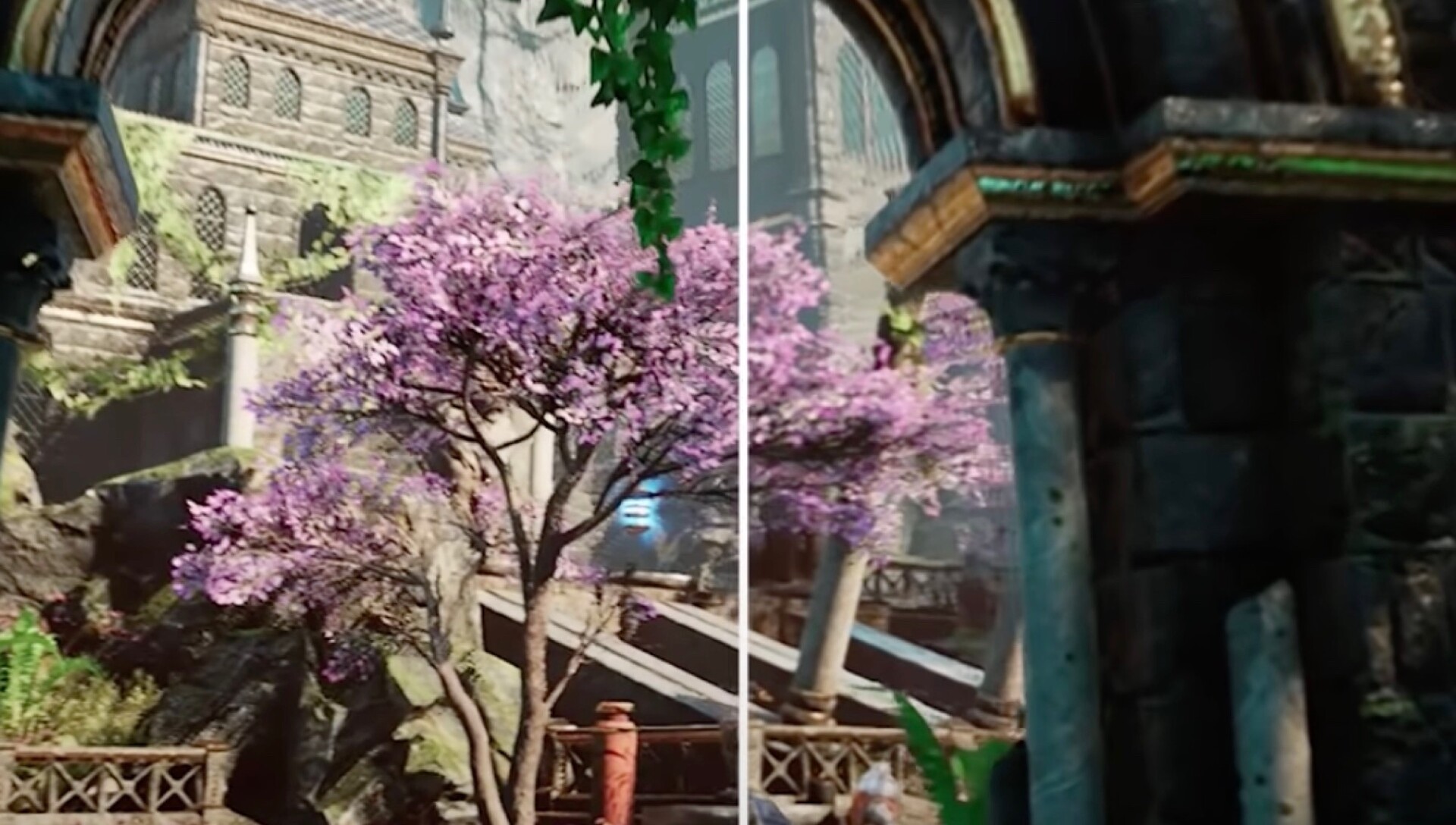During their Computex event AMD announced among other technologies their FidelityFX Super Resolution technology, known as FSR for short.
You can view a timestamped video below of the FSR portion of the AMD event.
FSR is apparently based on a "spatial upsampling algorithm". This generates a higher resolution image from every input frame without relying on previous frame data or motion vectors. How exactly this works under the hood will likely be expanded upon closer to the first games with support releasing on June 22.
FSR, similarly to DLSS will support multiple performance/image quality options, they are listed below:
Ultra
Quality
Balanced
Performance
AMD claims that FSR Ultra will give a practically identical experience to native quality.
AMD demoed Godfall at 4k Epic preset with RT turned on while using FSR at various modes with a 6800XT:
Native 4K - 49 FPS
FSR Ultra - 78
FSR Quality - 99
FSR Balanced - 124
FSR Performance - 150
AMD have also stated that FSR will be supported on all Radeon RX graphics cards:
In addition to this FSR is cross platform, meaning it will also work on Nvidia and Intel GPUs. In a ballsy move AMD showcased Godfall with FSR running on a GTX1060 on stage to prove that this technology is intended to set a new cross platform industry standard.
FSR is open source and will be available under the very unrestrictive MIT license on GPU Open shortly. This will allow people to access and view the source code as well as contribute to further development or integrate with their own games/engines/technology.
In addition to this FSR is set to support Direct X12, Vulkan and Direct X11.
Very interesting times ahead. It looks like AMD are casting a very wide net with this as it is set to work across a huge amount of GPU/CPU/APU combos from all different vendors. The different FSR modes look like they provide some good options for gamers and the code is supposed to be very easy to implement.
The key question will be the actual visual/image quality when we actually get to see some 3rd party comparisons, reviews etc... and when gamers actually get to use it on June 22 for themselves. Exciting times indeed, we could be witnessing the beginning of a new open standard for image upscaling in games.
You can view a timestamped video below of the FSR portion of the AMD event.
FSR is apparently based on a "spatial upsampling algorithm". This generates a higher resolution image from every input frame without relying on previous frame data or motion vectors. How exactly this works under the hood will likely be expanded upon closer to the first games with support releasing on June 22.
FSR, similarly to DLSS will support multiple performance/image quality options, they are listed below:
Ultra
Quality
Balanced
Performance
AMD claims that FSR Ultra will give a practically identical experience to native quality.
Enabling FidelityFX Super Resolution at "Ultra Quality" gives a practically identical visual experience with around 59% more performance in Godfall. Or get up to 2.5x the performance in select games when you choose the #FSR "Performance" preset in 4K.
AMD demoed Godfall at 4k Epic preset with RT turned on while using FSR at various modes with a 6800XT:
Native 4K - 49 FPS
FSR Ultra - 78
FSR Quality - 99
FSR Balanced - 124
FSR Performance - 150
AMD have also stated that FSR will be supported on all Radeon RX graphics cards:
FSR will officially be supported by all Radeon RX graphics cards, including RX Vega, RX 500, RX 5000 and RX 6000 series. In fact, AMD will enable FSR support even on Ryzen APUs and even competitors' products.
In addition to this FSR is cross platform, meaning it will also work on Nvidia and Intel GPUs. In a ballsy move AMD showcased Godfall with FSR running on a GTX1060 on stage to prove that this technology is intended to set a new cross platform industry standard.
FSR is open source and will be available under the very unrestrictive MIT license on GPU Open shortly. This will allow people to access and view the source code as well as contribute to further development or integrate with their own games/engines/technology.
In addition to this FSR is set to support Direct X12, Vulkan and Direct X11.
Super Resolution
Major framerate boosts combined with high-quality, high-resolution graphics!
Four different quality modes proposed: Performance, Balanced, Quality, and Ultra Quality.
Cross-platform
FSR is not limited to the latest GPU architectures only! It runs on a large variety of GPUs.
Wide API support for DirectX®12, Vulkan®, and DirectX®11!
Once released, FSR can be ported onto multiple platforms without restriction.
Open source
In due course, FSR 1.0 will be provided here on GPUOpen under the MIT license.
Easy to integrate
The same great experience that you expect from AMD FidelityFX, with a low barrier of entry.
Full shader source code provided for a smooth and flexible integration.
Fixed and arbitrary scaling supported.
Highly optimized
FSR is hand-optimized for fast performance across a wide variety of GPUs.
Very interesting times ahead. It looks like AMD are casting a very wide net with this as it is set to work across a huge amount of GPU/CPU/APU combos from all different vendors. The different FSR modes look like they provide some good options for gamers and the code is supposed to be very easy to implement.
The key question will be the actual visual/image quality when we actually get to see some 3rd party comparisons, reviews etc... and when gamers actually get to use it on June 22 for themselves. Exciting times indeed, we could be witnessing the beginning of a new open standard for image upscaling in games.













